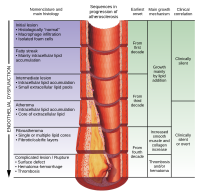
Photo from wikipedia
BackgroundRecently, veno-arterial extracorporeal membrane oxygenation (VA-ECMO) has become the rewarming treatment of choice in hypothermic cardiac arrest. The detailed indications for extracorporeal rewarming in non-arrested, severely hypothermic patients with circulatory… Click to show full abstract
BackgroundRecently, veno-arterial extracorporeal membrane oxygenation (VA-ECMO) has become the rewarming treatment of choice in hypothermic cardiac arrest. The detailed indications for extracorporeal rewarming in non-arrested, severely hypothermic patients with circulatory instability have not been established yet. The primary purpose of the study was a preliminary analysis of all aspects of the treatment process, as well as initial identification of mortality risk factors within the group of severely hypothermic patients, treated with arteriovenous extracorporeal membrane oxygenation (VA-ECMO). The secondary aim of the study was to evaluate efficacy of VA-ECMO in initial 6-h period of treatmentMethodsFrom July 2013 to June 2016, thirty one hypothermic patients were accepted for extracorporeal rewarming at Severe Accidental Hypothermia Center, Cracow. Thirteen patients were identified with circulatory instability and were enrolled in the study. The evaluation took into account patients’ condition on admission, the course of therapy, and changes in laboratory and hemodynamic parameters.ResultsNine out of 13 analyzed patients survived (69%). Patients who died were older, had lower both systolic and diastolic pressure, and had increased creatinine an potassium levels on admission. In surviving patients, arterial blood gases parameters (pH, BE, HCO3) and lactates would normalize more quickly. Their potassium level was lower on admission as well. The values of the core temperature on admission were comparable. Although normothermia was achieved in 92% of patients, none of them had been weaned-off VA-ECMO in the first 6 h of treatment.Discussion and ConclusionsIn our preliminary study more pronounced markers of cardiocirculatory instability and organ hypoperfusion were observed in non-survivors. Future studies on indications to extracorporeal rewarming in severely hypothermic, non-arrested patients should focus on the extent of hemodynamic disturbances. Short term (<6 h) treatment in severe hypothermic, non-arrested patients seems to be not clinically appropriate.
Journal Title: Scandinavian Journal of Trauma, Resuscitation and Emergency Medicine
Year Published: 2017
Link to full text (if available)
Share on Social Media: Sign Up to like & get
recommendations!